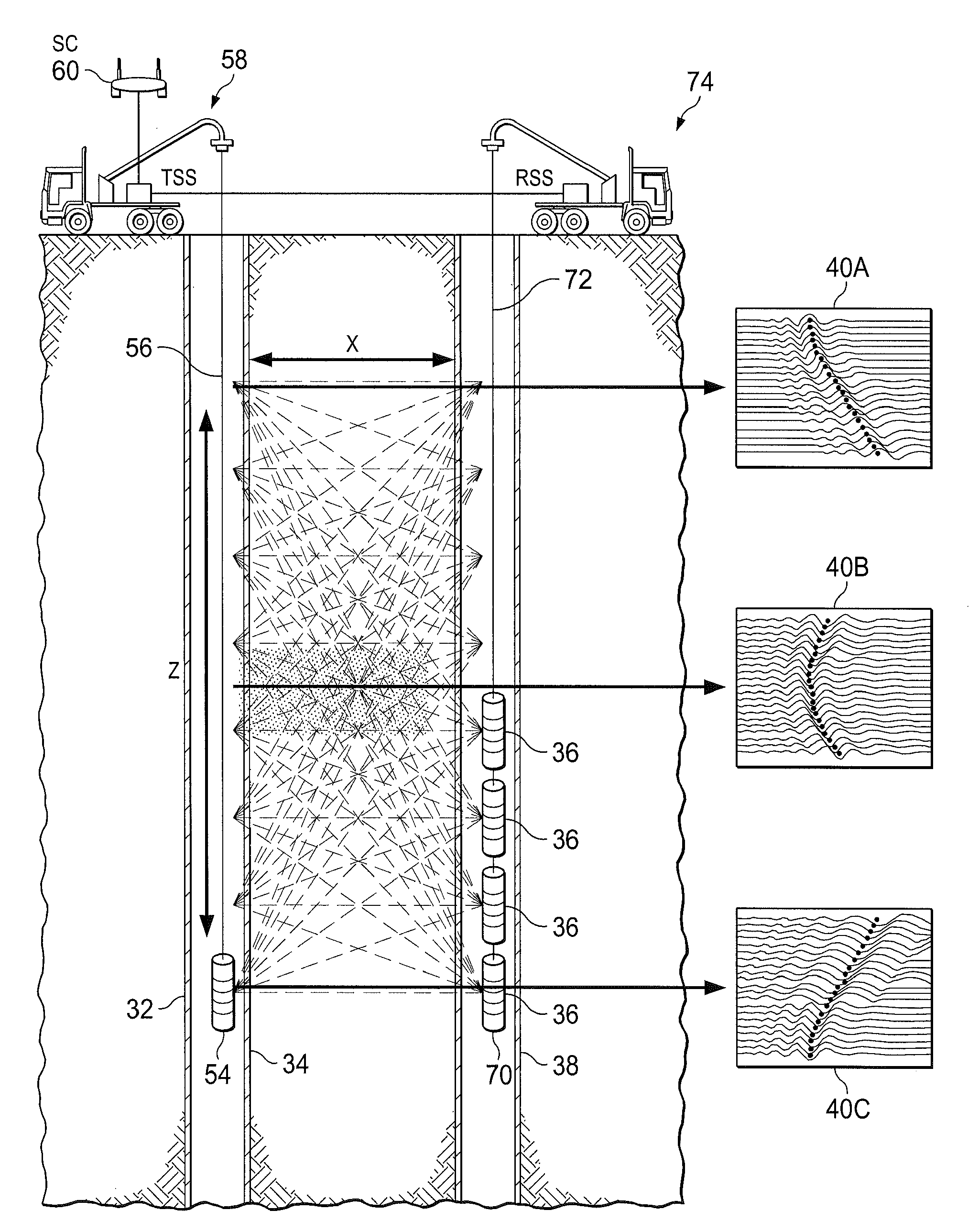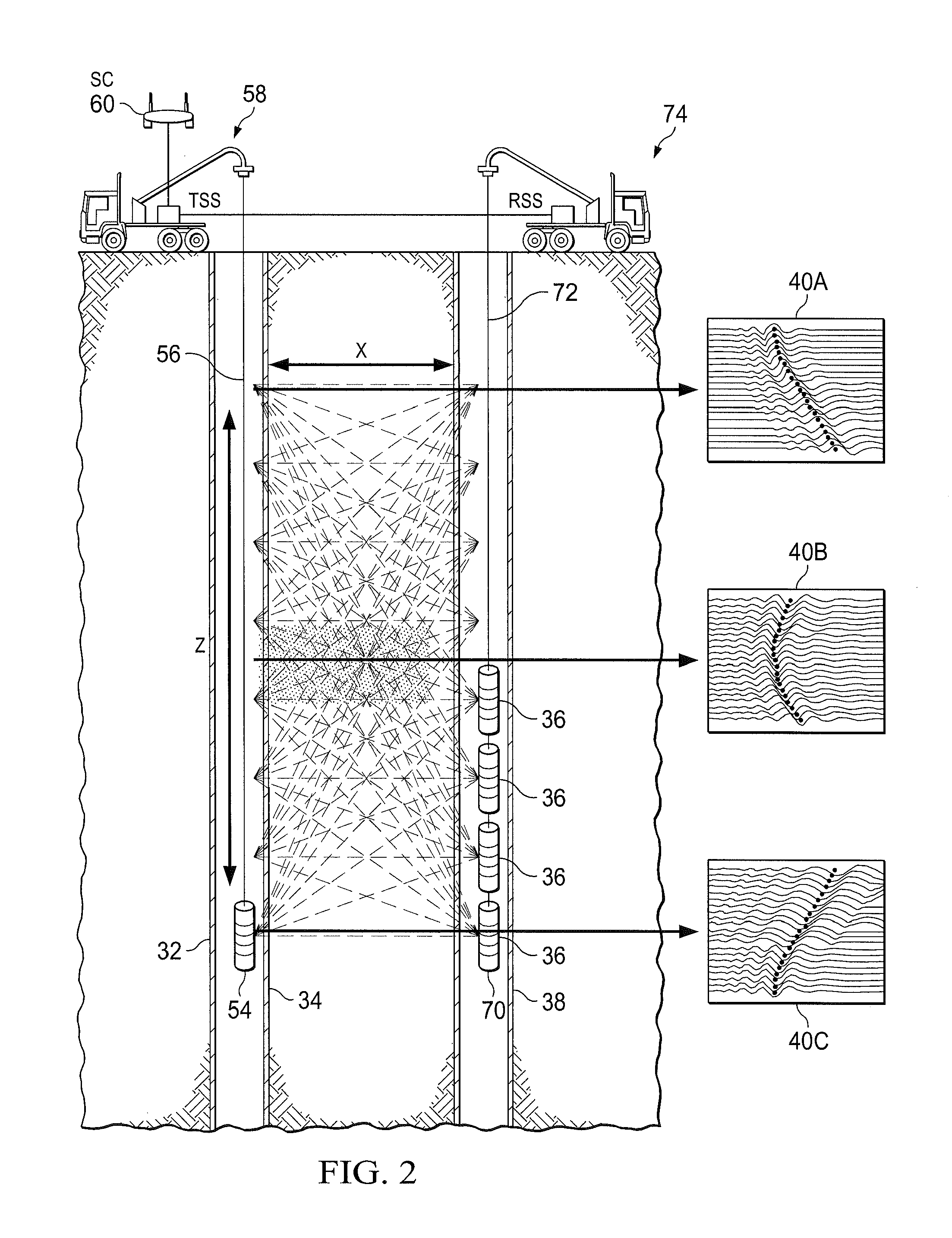Super-resolution formation fluid imaging
a formation fluid and super-resolution technology, applied in the field of imaging subsurface structures, can solve the problems of large scale brines, low frequency operating range which was required severely limited cross-well imaging resolution, and high frequency operating rang
- Summary
- Abstract
- Description
- Claims
- Application Information
AI Technical Summary
Benefits of technology
Problems solved by technology
Method used
Image
Examples
Embodiment Construction
[0027]By way of introduction, the present invention involves imaging sub-surface structures, particularly hydrocarbon reservoirs and fluids therein. The primary approach is related to cross-well and borehole-to-surface electromagnetic (EM) survey technology. The present invention specifically focuses on fully time-domain data acquisition using high-power pulsed EM sources. The present invention can also include spatial over-sampling and super-resolution data processing technology to improve image resolution. The present invention can also utilize magnetic materials to provide image contrast for regions containing injected fluids.
[0028]An improved approach to cross-well EM imaging is provided, using a combination of high-power pulsed magnetic field sources, fully time-domain signal acquisition, modem low-noise magnetic field sensors, spatial oversampling and super-resolution image enhancement and injected magnetic nanofluids. The approach provided by the present invention generates i...
PUM
 Login to View More
Login to View More Abstract
Description
Claims
Application Information
 Login to View More
Login to View More - R&D
- Intellectual Property
- Life Sciences
- Materials
- Tech Scout
- Unparalleled Data Quality
- Higher Quality Content
- 60% Fewer Hallucinations
Browse by: Latest US Patents, China's latest patents, Technical Efficacy Thesaurus, Application Domain, Technology Topic, Popular Technical Reports.
© 2025 PatSnap. All rights reserved.Legal|Privacy policy|Modern Slavery Act Transparency Statement|Sitemap|About US| Contact US: help@patsnap.com



